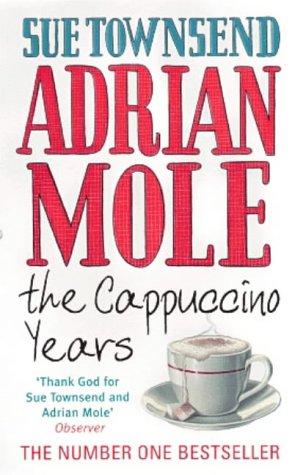 --The blurb--
--The blurb--"An accidental celebrity, with a spreading bald patch, despairing of family values, Mole is still worrying: Is Viagra cheating? Why won't the BBC produce "The White Van", his serial killer comedy? Mole, aged 30 1/4, chronicles the closing years of the 20th century with slanderous abandon."
--The review--
It's understandable that the runaway success of the Adrian Mole series when it first came out is perhaps a lot to live up to. The originals sold millions of copies and have been made into television shows, theatre productions and radio plays. They were made into musicals and computer games, and a feature film is planned. So the question perhaps on everyone's lips is whether or not the same esprit is maintained as Adrian passes from youth to adult.
In many ways the answer is no; while The Cappuccino Years is humorous, it is not laugh-out-loud funny and is imbued with predictability in terms of Adrian's character (though perhaps this is inevitable when a series is so long-running). While the series has grown up and progressed in terms of plot and setting (political and otherwise), Moley has not: the gawky teenager is an equally awkward and socially inept adult who thinks as naively and literally as in his teenage years, and it is more difficult to laugh at this in an adult character, where the opportunities for playing on a stereotype are not as plentiful as they are for teenage protagonists. And yet it is this stagnation of Adrian Mole's character that does in fact make this book a good competitor to its companions in the series: his blunders and egotism add ridiculousness and humour to the book, and the novel would probably be poorer without these characteristics. We can visualise Adrian just as well as before, as well as his hapless family and old school friends.
As well as having some humour (in a roundabout sort of way) the book is also touching and generally concise. However, there are two slightly incredulous aspects: one is the 'wife swap' situation between Pandora and Adrian's respective sets of parents (though perhaps this only enhances the comedy further, and so can be excused), and the other is in the novel's general style. It appears that by this stage in the series, Townsend has lost her grip on the diary style. While this would make an excellent first-person narrative, it relies too much on giving background information (which would not normally occur in a diary), and even though, as previously mentioned, the novel is usually quite concise, a few of the entries do ramble on.
These shortfalls therefore do not make this the best book in the series. However, it is worth reading in the context of the others, and it allows Townsend to keep her reputation for what it is she originally became famous for: for providing entertaining, politically pertinent, and touching reads whose doors (or covers) are open to all.
Other works in the Adrian Mole series
The Secret Diary of Adrian Mole, Aged 13 3/4 (1982)
The Growing Pains of Adrian Mole (1985)
The True Confessions of Adrian Albert Mole (1989)
Adrian Mole: The Wilderness Years (1993)*
Adrian Mole and the Weapons of Mass Destruction (2004)
*Adrian Mole: The Cappuccino Years fits here in the series. Published 1999.





No comments:
Post a Comment